Text
According to Naranjo's teachings, every subtype of the Enneagram has "irrational ideas": these are the unspoken creeds that shape the neurosis of each type. Following/acing on these ideas intensifies your neurosis, making it worse and preventing a type from moving to a healthier place.
All of these are irrational ideas are extracted from Naranjo's books on each type.
E1.
From: Psicología de los Eneatipos, Eneatipo 1, Ira.



E2.
From: Orgullo: Caprichosos, histriónicos y conquistadores.


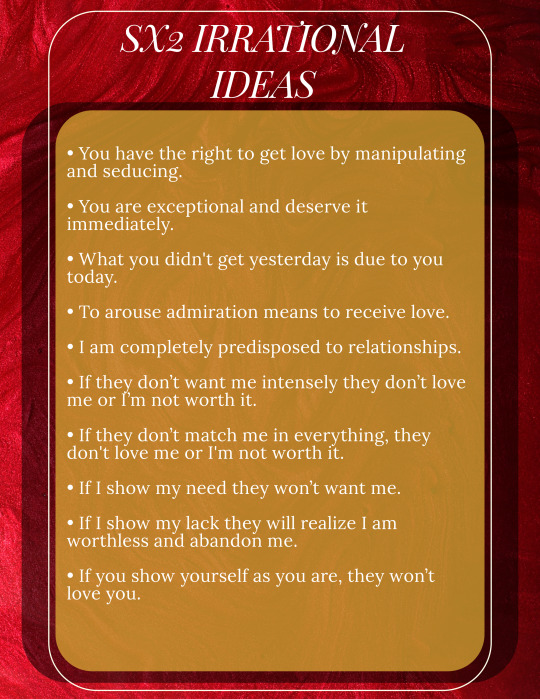
E3.
From: Vanidad: Psicología de los eneatipos.



E4.
From: Envidia (Eneatipo 4): Abnegados, odiadores y melancólicos.



E5.
From: Avaricia: Mezquinos, arrogantes e indiferentes.


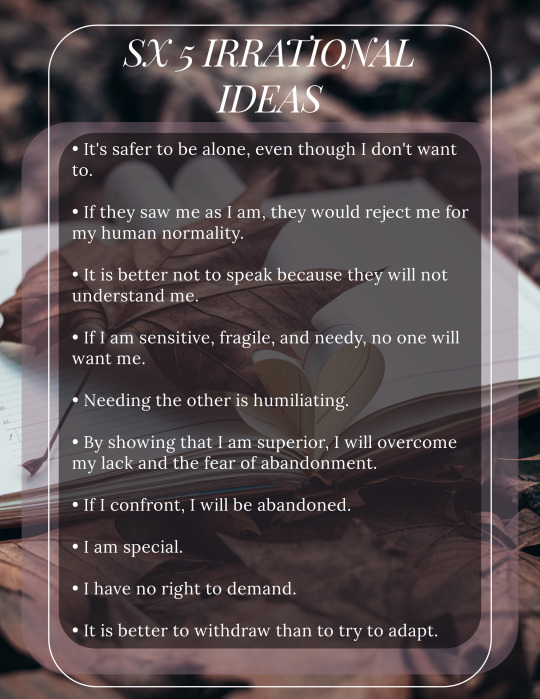
E6.
From: Cobardes, desafiantes y fanáticos: Las formas del Miedo.



E7
From: Golosos, tramposos, soñadores y charlatanes: Psicología de los eneatipos.


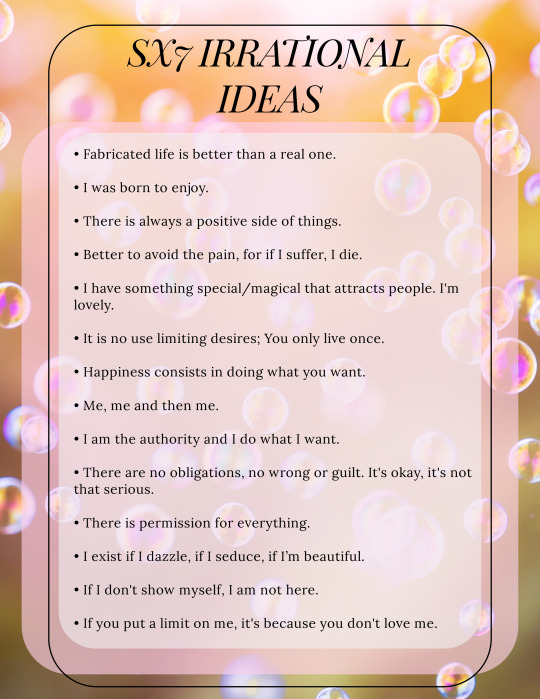
E8 - not out yet.
E9.
From: Acedia: Psychospiritual laziness.



#enneagram#enneagram 1#enneagram 2#enneagram 3#enneagram 4#enneagram 5#enneagram 6#enneagram 7#enneagram 9#psychology
88 notes
·
View notes
Text

I didn't even kill Orin in our duel - my water elemental did, while my character ran around invisible and scared. Bhaal should have offered the position of a Chosen to it.
38 notes
·
View notes
Text
Shamelessly stolen from r/baldursgate3
31K notes
·
View notes
Text
Astarion vs gale girls is just the old fenris vs Anders girls war rehashed except this time the Anders girls can stop him from blowing shit up and should in their best interest stop him from blowing shit up
281 notes
·
View notes
Text
Differences between Enneagram 2 vs Enneagram 3.
While Sx2 is probably the hardest to confuse with E3, I can see how it can be challenging to mistake SP2 for SX3 (both being shy, the most withdrawn among subtypes of their core) and especially SO2 with just any E3 in general because:
a) SO2 is the most intellectual 2, disconnected from their emotions in favour of productivity:
𝘐𝘧 𝘵𝘩𝘦 𝘥𝘦𝘧𝘦𝘯𝘴𝘦 𝘮𝘦𝘤𝘩𝘢𝘯𝘪𝘴𝘮 𝘰𝘧 𝘵𝘩𝘦 𝘌2 𝘪𝘴 𝘳𝘦𝘱𝘳𝘦𝘴𝘴𝘪𝘰𝘯, 𝘸𝘩𝘪𝘤𝘩 𝘵𝘶𝘳𝘯𝘴 𝘶𝘯𝘤𝘰𝘯𝘴𝘤𝘪𝘰𝘶𝘴 𝘵𝘩𝘦 𝘵𝘩𝘰𝘶𝘨𝘩𝘵𝘴, 𝘤𝘳𝘢𝘷𝘪𝘯𝘨𝘴, 𝘢𝘯𝘥 𝘯𝘦𝘤𝘦𝘴𝘴𝘪𝘵𝘪𝘦𝘴 𝘳𝘦𝘨𝘢𝘳𝘥𝘦𝘥 𝘢𝘴 𝘶𝘯𝘢𝘤𝘤𝘦𝘱𝘵𝘢𝘣𝘭𝘦, 𝘪𝘯 𝘵𝘩𝘦 𝘴𝘰𝘤𝘪𝘢𝘭 𝘌2 𝘵𝘩𝘪𝘴 𝘴𝘵𝘳𝘢𝘵𝘦𝘨𝘺 𝘭𝘦𝘢𝘥𝘴 𝘵𝘰 𝘢𝘯 𝘢𝘭𝘮𝘰𝘴𝘵 𝘤𝘰𝘮𝘱𝘭𝘦𝘵𝘦 𝘤𝘰𝘰𝘭𝘪𝘯𝘨 𝘰𝘧 𝘦𝘮𝘰𝘵𝘪𝘰𝘯𝘴. 𝘛𝘩𝘦𝘳𝘦 𝘢𝘳𝘦 𝘵𝘪𝘮𝘦𝘴 𝘪𝘯 𝘸𝘩𝘪𝘤𝘩, 𝘧𝘢𝘤𝘦𝘥 𝘸𝘪𝘵𝘩 𝘢 𝘴𝘪𝘨𝘯𝘪𝘧𝘪𝘤𝘢𝘯𝘵𝘭𝘺 𝘱𝘢𝘪𝘯𝘧𝘶𝘭 𝘩𝘢𝘱𝘱𝘦𝘯𝘪𝘯𝘨, 𝘩𝘦 “𝘧𝘳𝘦𝘦𝘻𝘦𝘴” 𝘢𝘯𝘥 𝘭𝘰𝘴𝘦𝘴 𝘤𝘰𝘯𝘵𝘢𝘤𝘵 𝘸𝘪𝘵𝘩 𝘱𝘢𝘳𝘵 𝘰𝘧 𝘩𝘪𝘴 𝘦𝘮𝘰𝘵𝘪𝘰𝘯𝘢𝘭 𝘸𝘰𝘳𝘭𝘥. 𝘛𝘩𝘦 𝘴𝘰𝘤𝘪𝘢𝘭 𝘌2, 𝘸𝘩𝘦𝘯 𝘨𝘦𝘵𝘵𝘪𝘯𝘨 𝘵𝘰 𝘢𝘥𝘶𝘭𝘵𝘩𝘰𝘰𝘥, 𝘵𝘳𝘪𝘦𝘴 𝘵𝘰 𝘳𝘦𝘱𝘳𝘰𝘥𝘶𝘤𝘦 𝘵𝘩𝘦 𝘴𝘢𝘮𝘦 𝘴𝘪𝘵𝘶𝘢𝘵𝘪𝘰𝘯 𝘪𝘮𝘢𝘨𝘪𝘯𝘪𝘯𝘨 𝘭𝘰𝘵𝘴 𝘰𝘧 𝘱𝘳𝘰𝘫𝘦𝘤𝘵𝘴, 𝘢𝘯𝘥 𝘵𝘦𝘭𝘭𝘪𝘯𝘨 𝘵𝘩𝘪𝘴 𝘢𝘴 𝘪𝘧 𝘪𝘵 𝘸𝘦𝘳𝘦 𝘥𝘰𝘯𝘦 𝘢𝘴 𝘢 𝘭𝘪𝘵𝘵𝘭𝘦 𝘣𝘰𝘺 𝘰𝘳 𝘨𝘪𝘳𝘭. 𝘛𝘩𝘶𝘴 𝘢𝘭𝘮𝘰𝘴𝘵 𝘢𝘭𝘭 𝘦𝘯𝘦𝘳𝘨𝘺 𝘪𝘴 𝘧𝘰𝘤𝘶𝘴𝘦𝘥 𝘰𝘯 𝘱𝘳𝘰𝘧𝘦𝘴𝘴𝘪𝘰𝘯𝘢𝘭 𝘭𝘪��𝘦, 𝘮𝘪𝘴𝘵𝘢𝘬𝘪𝘯𝘨 𝘵𝘩𝘦 𝘤𝘰𝘯𝘲𝘶𝘦𝘳𝘪𝘯𝘨 𝘰𝘧 𝘵𝘦𝘳𝘳𝘪𝘵𝘰𝘳𝘪𝘦𝘴 𝘸𝘪𝘵𝘩 𝘳𝘦𝘤𝘦𝘪𝘷𝘪𝘯𝘨 𝘭𝘰𝘷𝘦. 𝘛𝘩𝘪𝘴 𝘸𝘢𝘺 𝘩𝘦 𝘪𝘴 𝘬𝘦𝘱𝘵 𝘪𝘯 𝘤𝘰𝘯𝘵𝘢𝘤𝘵 𝘸𝘪𝘵𝘩 𝘤𝘰𝘯𝘴𝘵𝘢𝘯𝘵 𝘰𝘣𝘫𝘦𝘤𝘵𝘪𝘷𝘦𝘴 𝘵𝘩𝘢𝘵 𝘢𝘭𝘭𝘰𝘸 𝘩𝘪𝘮 𝘵𝘰 𝘥𝘦𝘷𝘦𝘭𝘰𝘱 𝘩𝘪𝘴 𝘴𝘦𝘭𝘧-𝘪𝘮𝘢𝘨𝘦 𝘢𝘴 𝘤𝘰𝘮𝘱𝘦𝘵𝘦𝘯𝘵 𝘢𝘯𝘥 𝘢𝘥𝘮𝘪𝘳𝘢𝘣𝘭𝘦.
b) SO2 is an extremely ambitious type, focused on networking, achievements, being the centre of the stage e.t.c - something we always believe to be E3 trait.
However, there are some major, core differences between E2 and E3:
E2 has natural confidence, whereas E3 does not.
𝘛𝘩𝘦 𝘌3 𝘦𝘹𝘱𝘦𝘳𝘪𝘦𝘯𝘤𝘦𝘴 𝘢𝘯𝘹𝘪𝘦𝘵𝘺 𝘢𝘯𝘥 𝘴𝘦𝘭𝘧-𝘥𝘰𝘶𝘣𝘵 𝘧𝘰𝘳 𝘧𝘦𝘢𝘳 𝘰𝘧 𝘯𝘰𝘵 𝘴𝘶𝘤𝘤𝘦𝘦𝘥𝘪𝘯𝘨. 𝘛𝘩𝘦 𝘌2, 𝘩𝘰𝘸𝘦𝘷𝘦𝘳, 𝘪𝘴 𝘤𝘰𝘯𝘧𝘪𝘥𝘦𝘯𝘵 𝘵𝘩𝘢𝘵 𝘩𝘦 𝘸𝘪𝘭𝘭 𝘴𝘶𝘤𝘤𝘦𝘦𝘥: 𝘏𝘪𝘴 𝘤𝘳𝘢𝘻𝘺 𝘪𝘥𝘦𝘢 𝘪𝘴 𝘵𝘩𝘢𝘵 𝘩𝘦 𝘥𝘰𝘦𝘴 𝘯𝘰𝘵 𝘯𝘦𝘦𝘥 𝘵𝘰 𝘤𝘰𝘮𝘱𝘦𝘵𝘦, 𝘸𝘩𝘦𝘯 𝘩𝘦 𝘩𝘢𝘴 𝘣𝘦𝘦𝘯 𝘤𝘰𝘮𝘱𝘦𝘵𝘪𝘯𝘨 𝘢𝘭𝘭 𝘩𝘪𝘴 𝘭𝘪𝘧𝘦, 𝘸𝘪𝘵𝘩 𝘩𝘪𝘴 𝘧𝘢𝘵𝘩𝘦𝘳, 𝘮𝘰𝘵𝘩𝘦𝘳, 𝘰𝘳 𝘴𝘪𝘣𝘭𝘪𝘯𝘨𝘴, 𝘦𝘷𝘦𝘯 𝘧𝘳𝘰𝘮 𝘢 𝘱𝘭𝘢𝘤𝘦 𝘰𝘧 𝘴𝘶𝘱𝘦𝘳𝘪𝘰𝘳𝘪𝘵𝘺.
E3 is a lot cooler and even phobic in some cases (makes sense as they have a connection to E6) and would prefer to avoid fight not to lose the good image; E2 has no issues with aggressiveness, especially if SX instinct is not last.
𝘐𝘧 𝘵𝘩𝘦𝘳𝘦 𝘪𝘴 𝘢 𝘤𝘰𝘯𝘧𝘭𝘪𝘤𝘵, 𝘵𝘩𝘦 𝘌3 𝘸𝘪𝘭𝘭 𝘬𝘦𝘦𝘱 𝘵𝘩𝘦 𝘧𝘰𝘳𝘮𝘴 𝘴𝘰 𝘢𝘴 𝘯𝘰𝘵 𝘵𝘰 𝘭𝘰𝘴𝘦 𝘩𝘪𝘴 𝘪𝘮𝘢𝘨𝘦. 𝘛𝘩𝘦 𝘌2, 𝘮𝘰𝘳𝘦 𝘤𝘰𝘶𝘯𝘵𝘦𝘳-𝘱𝘩𝘰𝘣𝘪𝘤, 𝘣𝘦𝘤𝘰𝘮𝘦𝘴 𝘱𝘢𝘴𝘴𝘪𝘰𝘯𝘢𝘵𝘦 𝘣𝘦𝘭𝘪𝘦𝘷𝘪𝘯𝘨 𝘵𝘩𝘢𝘵 𝘩𝘦 𝘸𝘪𝘭𝘭 𝘣𝘦 𝘢𝘣𝘭𝘦 𝘵𝘰 𝘤𝘰𝘯𝘷𝘪𝘯𝘤𝘦 𝘵𝘩𝘦 𝘰𝘵𝘩𝘦𝘳 𝘢𝘯𝘥 𝘪𝘨𝘯𝘰𝘳𝘦𝘴 𝘵𝘩𝘦 𝘰𝘵𝘩𝘦𝘳 𝘢𝘯𝘥 𝘪𝘨𝘯𝘰𝘳𝘦𝘴 𝘵𝘩𝘦 𝘴𝘪𝘨𝘯𝘢𝘭𝘴 𝘵𝘩𝘢𝘵 𝘪𝘯𝘥𝘪𝘤𝘢𝘵𝘦 𝘵𝘩𝘢𝘵 𝘩𝘦/𝘴𝘩𝘦 𝘪𝘴 𝘪𝘯 𝘥𝘢𝘯𝘨𝘦𝘳 𝘰𝘧 𝘣𝘦𝘪𝘯𝘨 𝘦𝘹𝘤𝘭𝘶𝘥𝘦𝘥.
E3 is chameleonic, in a sense that they shapeshift unconsciously, to blend in with the environment to fit in (like a chameleon); Whereas E2 shapeshifting is deliberate, to serve their goals.
𝘛𝘩𝘦 𝘪𝘮𝘢𝘨𝘦 𝘰𝘧 𝘵𝘩𝘦 𝘛𝘩𝘳𝘦𝘦 𝘪𝘴 𝘮𝘰𝘳𝘦 𝘤𝘩𝘢𝘮𝘦𝘭𝘦𝘰𝘯-𝘭𝘪𝘬𝘦; 𝘰𝘯 𝘵𝘩𝘦 𝘰𝘵𝘩𝘦𝘳 𝘩𝘢𝘯𝘥, 𝘵𝘩𝘦 𝘛𝘸𝘰 𝘱𝘳𝘦𝘵𝘦𝘯𝘥𝘴 𝘵𝘰 𝘢𝘥𝘢𝘱𝘵, 𝘢𝘴 𝘢 𝘮𝘦𝘢𝘯𝘴 𝘵𝘰 𝘢𝘤𝘩𝘪𝘦𝘷𝘦 𝘵𝘩𝘦𝘪𝘳 𝘨𝘰𝘢𝘭𝘴.
E3 is way more aware of their image and how others perceive them, and they care about that, whereas E2 is actually a bit more oblivious to that.
𝘛𝘩𝘳𝘦𝘦 𝘪𝘴 𝘮𝘰𝘳𝘦 𝘪𝘯 𝘤𝘰𝘯𝘵𝘳𝘰𝘭 𝘰𝘧 𝘩𝘪𝘴 𝘦𝘮𝘰𝘵𝘪𝘰𝘯𝘴, 𝘦𝘴𝘱𝘦𝘤𝘪𝘢𝘭𝘭𝘺 𝘪𝘯 𝘱𝘶𝘣𝘭𝘪𝘤, 𝘣𝘦𝘤𝘢𝘶𝘴𝘦 𝘪𝘵 𝘪𝘴 𝘮𝘰𝘳𝘦 𝘪𝘮𝘱𝘰𝘳𝘵𝘢𝘯𝘵 𝘵𝘰 𝘩𝘪𝘮 𝘵𝘩𝘢𝘵 𝘩𝘪𝘴 𝘪𝘮𝘢𝘨𝘦 𝘣𝘦 𝘥𝘢𝘮𝘢𝘨𝘦𝘥. 𝘛𝘩𝘦 𝘛𝘸𝘰, 𝘰𝘯 𝘵𝘩𝘦 𝘰𝘵𝘩𝘦𝘳 𝘩𝘢𝘯𝘥, 𝘪𝘯 𝘩𝘪𝘴 𝘴𝘦𝘭𝘧-𝘢𝘨𝘨𝘳𝘢𝘯𝘥𝘪𝘻𝘦𝘮𝘦𝘯𝘵, 𝘥𝘰𝘦𝘴 𝘯𝘰𝘵 𝘴𝘦𝘦 𝘵𝘩𝘦 𝘤𝘰𝘯𝘴𝘦𝘲𝘶𝘦𝘯𝘤𝘦𝘴 𝘰𝘧 𝘩𝘪𝘴 𝘷𝘦𝘩𝘦𝘮𝘦𝘯𝘤𝘦 𝘢𝘯𝘥 𝘤𝘰𝘯𝘥𝘦𝘴𝘤𝘦𝘯𝘴𝘪𝘰𝘯.
E3 is more cautious and even withdrawn than E2.
𝘛𝘩𝘦 𝘌3 𝘪𝘴 𝘮𝘰𝘳𝘦 𝘳𝘦𝘧𝘪𝘯𝘦𝘥 𝘢𝘯𝘥 𝘴𝘰𝘱𝘩𝘪𝘴𝘵𝘪𝘤𝘢𝘵𝘦𝘥, 𝘢𝘯𝘥 𝘵𝘩𝘦 𝘌2 𝘪𝘴 𝘮𝘰𝘳𝘦 𝘧𝘭𝘢𝘮𝘣𝘰𝘺𝘢𝘯𝘵, 𝘸𝘪𝘵𝘩 𝘢 𝘮𝘰𝘳𝘦 𝘱𝘦𝘳𝘴𝘰𝘯𝘢𝘭 𝘴𝘵𝘺𝘭𝘦, 𝘸𝘩𝘪𝘤𝘩 𝘤𝘢𝘯 𝘣𝘦 𝘴𝘰𝘮𝘦𝘸𝘩𝘢𝘵 𝘦𝘤𝘤𝘦𝘯𝘵𝘳𝘪𝘤.
E2 achieves for the sake of proving to others how great they are, just to show that they can, E3 does this because they want to be valued for their hard work.
𝘉𝘰𝘵𝘩 𝘢𝘳𝘦 𝘤𝘰𝘮𝘱𝘦𝘵𝘪𝘵𝘪𝘷𝘦. 𝘛𝘩𝘳𝘦𝘦 𝘴𝘦𝘦𝘬𝘴 𝘳𝘦𝘤𝘰𝘨𝘯𝘪𝘵𝘪𝘰𝘯 𝘵𝘩𝘢𝘵 𝘩𝘦 𝘪𝘴 𝘨𝘰𝘰𝘥 𝘢𝘯𝘥 𝘤𝘰𝘮𝘱𝘦𝘵𝘦𝘴 𝘵𝘰 𝘣𝘦 𝘷𝘢𝘭𝘶𝘦𝘥 𝘧𝘰𝘳 𝘪𝘵. 𝘛𝘩𝘦 𝘛𝘸𝘰 "𝘬𝘯𝘰𝘸𝘴" 𝘩𝘦 𝘪𝘴 𝘵𝘩𝘦 𝘣𝘦𝘴𝘵 𝘢𝘯𝘥 𝘸𝘢𝘯𝘵𝘴 𝘵𝘰 𝘣𝘦 𝘨𝘪𝘷𝘦𝘯 𝘩𝘪𝘴 𝘳𝘪𝘨𝘩𝘵𝘧𝘶𝘭 𝘱𝘭𝘢𝘤𝘦.
Source: Naranjo's Psicología de los Eneatipos: Orgullo: Caprichosos, Histriónicos y Conquistadores (Pride: Capricious, Histrionic and Conquerors), 2020
19 notes
·
View notes
Photo
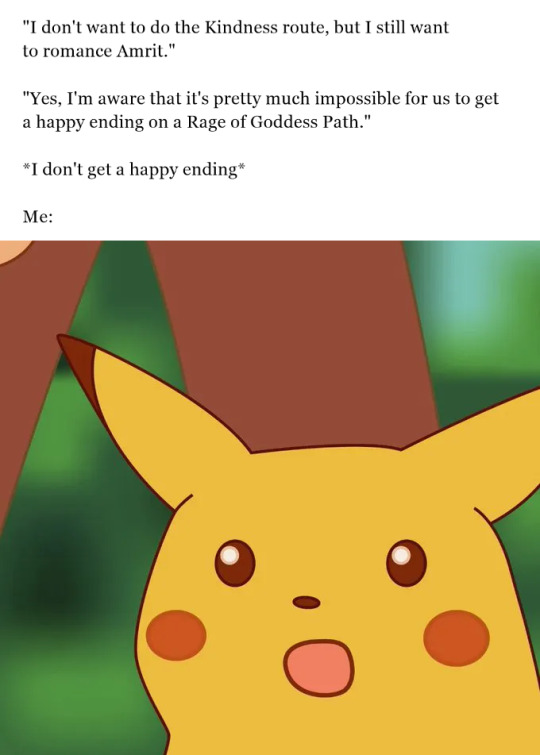
Basically how I feel now that I’ve reached the finale of KCD.
#romance club#kali call of darkness#romance club meme#rc kali call of darkness#romance club spoilers
7 notes
·
View notes
Text
Me, trying to understand how to progress Gale’s romance in EA

I genuienly have no more patience or brainpower to try to understand how to trigger his bloody Weave scene and get him to kiss MC to progress the romance line.
Sincerelly hope this will be fixed upon full release, becase I like Gale a lot, but looking at all the hoops you need to jump through to get a single kiss is just painful. Every walkthrough I just go

and end up going for Astarion.
12 notes
·
View notes
Photo

#romance club#heaven's secret#heaven's secret 2#malbonte#romance club memes#my art#my mc is a dumbass
363 notes
·
View notes
Photo
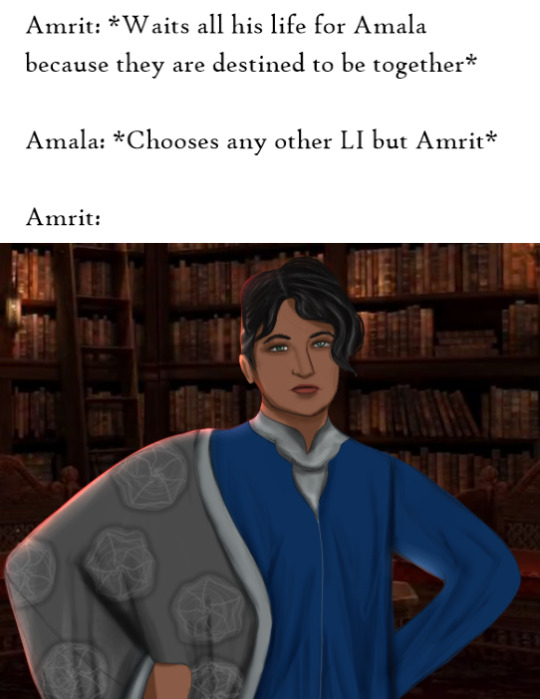
I was honestly just looking for an excuse to draw him in that pose
104 notes
·
View notes
Text
Achtung! Spoiler for KCD.

129 notes
·
View notes
Text
Connectinon Between Childhood Trauma and Enneagram
I've decided to share some of the stuff I learned about the childhood experience of all Enneagram types, and how this experience shapes us into a certain type. All this is based on some of my observations and studies plus backed up with some info from the books: Personality Types: Using the Enneagram for Self-Discovery by Don Richard Riso & Russ Hudon and The Enneagram Guide to Waking Up by Beatrice Chestnut.
And do keep in mind that it’s just a general pattern and observation - while it’s a lot more common for a certain type to have such a childhood experince, nothing is set in stone.
Type 1
A person could have been shaped into a One based on the experience from their early childhood where they had strict and controlling parents, which from early childhood showed the little One that they have to be responsible person, that is more mature than their peers:
Early in life, One had a painful experience of feeling criticized. When this happened, he felt pressured to conform to others’ standards of good behavior. One unconsciously tried to cope with the pain of feeling judged and punished by proactively monitoring and criticizing himself before others had a chance to. He internalized the standards others applied to him and tried to be good and do the right thing all the time. He began to feel that he had to be perfect to be seen as worthy and that he had to work hard to control himself in order to be “good.”
From: Enneagram Guide to Waking Up by Beatrice Chestnut.
Alternatively, One could have had Incompetent, naive, and/or immature parents, which showed the little 1 that they are incapable of taking care of them, so this child had to grow up too early, and become the “adult one” themselves. Type One is part of the Frustration triad, which was dissatisfied with their parental figures. They could also have been frustrated with too many rules in the family, so they developed their own vision of how things should be:
The disconnection from the protective figure, and what that person symbolized, was of central importance to the development of the superego: these children felt that they could not rely on the structure and guidelines provided by their family of origin. They may have experienced the rules of the family as arbitrary and unfair, or too strict, or too unstable. Whatever the particulars, Ones were dissatisfied and frustrated with the structure and limits that they received from the protective-figure and so felt that they had to develop their own guidelines.
From: Personality Types: Using the Enneagram for Self-Discovery by Don Richard Riso & Russ Hudon.
Type 2
All the attention and focus of type Two goes towards love and care because, as children, they felt unloved, not needed and uncared about (which is more of the case with an unhealthy childhood experience).
As Two grew up, she experienced bad feelings when some of her needs weren’t met by the people around her. Sometimes when she was hungry, no one came to feed her. Sometimes when she got hurt, no one realized she needed comfort. And when she felt her deep need for love, she often felt that she did not receive it. Two tried to find the love she needed by expressing love for the people around her. She tried to get them to take care of her by taking care of them. If she was very pleasing, helpful, and supportive of others, she thought, they would want to be very pleasing, helpful, and supportive of her. They might remember to take care of her. To get the love she needed so much, Two found herself doing all she could to please the people in her world.
From: Enneagram Guide to Waking Up by Beatrice Chestnut.
Alternatively, type Twos could have been slightly more connected to the protective figure, as opposed to the more nurturing one, or they may have grown up without a nurturing figure altogether. So Twos learned to take up on a role of a nurturing figure themselves.
Since the orientation is toward the protective figure who represents the qualities associated with patriarchy— authority, structure, discipline, guiding the child in the ways of the world—the child began to identify with the complementary, matriarchal role. Young Twos learned to become "little nurturers" as a way of gaining safety and security in the family system. In other words, they believed that if they could nurture others in their family sufficiently, they could win the affection and protection of the protective-figure. This relationship with the protective figure sets the stage for a similar orientation toward everyone who can give Twos the love they want.
From: Personality Types: Using the Enneagram for Self-Discovery by Don Richard Riso & Russ Hudon.
Type 3
The strong impulse to achieve, be better and be praised that type Three craves stems from their childhood experience, where they were only (or mostly) loved and given attention when they somehow stood out from their peers, particularly for their accomplishments.
Three saw that she was praised for what she did, not for who she was. Everyone around her got very excited and happy when she successfully completed her homework, or did a trick in gymnastics, or won a game. But when she expressed her true emotions, when she felt sad or disappointed or hurt, no one paid any attention to her at all. She felt lonely and scared when no one recognized her or cared about what she expressed from her heart. People seemed to like her when she accomplished things; but they acted as if she didn’t exist when she was just being herself. Three found a way to make sure that she wouldn’t feel alone or fearful anymore. She discovered that she had the ability to sense what people valued and then magically turn herself into exactly that.
From: Enneagram Guide to Waking Up by Beatrice Chestnut.
Alternatively, Threes are also part of an Attachment triad because they were very connected to the mother (or the mother figure) - basically, anyone that praises and admires them, showers them with gifts and compliments, and they got so attached to this person from early childhood that they learned to act in a way that will receive this positive affirmation.
As young children, Threes were connected to the nurturing figure, the person who in their early development mirrored them, cared for them, and provided affection and a sense of the Three's personal value. This person is usually the Three's mother or a mother-substitute, but not always. In some cases, the mother may have been largely absent, physically or emotionally, and it fell upon the father or a sibling to nurture the baby. In other cases, a nanny or grandparent may have fulfilled this role. In any case, it is important to understand that the nurturing figure is the person who cared for the child and who provided mirroring. In their formative years, Threes learn to tune in to the desires and hopes of their nurturing-figure. As adults, Threes continue to play out this pattern learned in early childhood. They seek out people whom they admire and esteem to give them validation and admiration.
From: Personality Types: Using the Enneagram for Self-Discovery by Don Richard Riso & Russ Hudon.
Type 4
As young children, type Four felt a loss of connection with their parents. Similar to type Two, they felt that they were unloved and not needed, but unlike Twos that were ambivalent to their parental figures, Fours felt completely disconnected from them. Moreover, type Fours started to believe (or were even directly told) that the parents are no longer connected and appreciate them because of the Four's fault, that they are somehow to blame. Maybe they were a child of a younger couple that has the kid too early and then blamed the Four, maybe claiming that them being born ruined all the opportunities for these now-parents. Four could have also started to think on their own that since the parents no longer like and care for them as much, then there must be something wrong with them, that they are not like everyone else.
Fours are disconnected from both parents. As children, they did not identify with either their mothers or their fathers. ("I am not like my mother; I am not like my father.") They may have had either unhappy or solitary childhoods as a result of their parents' marital problems, divorce, illness, or simply because of personality conflicts within the family.
From: Personality Types: Using the Enneagram for Self-Discovery by Don Richard Riso & Russ Hudon.
Even more often there could have been a sibling rivalry in the family, where Four was the older sibling, and all the attention was given to their younger sister(s)/brother(s) while they felt abandoned, so they felt the need to somehow stand out to be noticed.
A baby was born. It was as if Four’s perfect world ended. No longer was she the center of her parents’ attention. No longer was she the most special child in the world. When she wanted someone to play with or a hug, everyone was busy taking care of the baby. She felt unimportant, alone, and ordinary. Four made sense of this terrible new situation by believing that she must have done something wrong to cause the loss of connection with her parents. After all, they didn’t seem to care about her the way they did before. It must have been her fault. They must have discovered there was something wrong with her. This new baby must somehow be better. What other explanation could there be? Four’s new way of thinking caused her some pain and distress, but gradually she got used to feeling bad—and sad. And, she reasoned, if it was her fault that she had lost the connection she had once felt—maybe that meant she could do something to make things right. Maybe she could somehow make a connection with others and the world again by showing everyone how special she was— or by making them see how much she was suffering by acknowledging that she wasn’t as special as she had thought. Over time, Four tried different ways to rebuild the connection she had lost. She tried to get people to see her as special again.
From: Enneagram Guide to Waking Up by Beatrice Chestnut.
Type 5
In their early childhood, Type Fives felt an almost smothering influence of their parents: they could have been way too involved in the lives of their child, too clingy, giving them little to no privacy, and constantly invading their personal space, leaving too little room for Fives to withdraw and be left alone. That is what developed a Withdrawal stance in type Fives, as they started to realize that if they will let other people way too close, that they start to get too overly involved in other people’s lives they will also start to lose that independence and will again be overwhelmed with people’s attention and demands. So Fives learned to not only minimize their needs but to also avoid investing in a lot of relationships.
When she was young, Five tried to create true heartfelt connections with people. However, those people had a tendency to invade her space when she felt like being alone. And then they weren’t around when she really wanted them to be. Both intrusion and unavailability were a cause of constant concern for Five, which made it hard for her to know what to do to relate well to others, especially when she felt intruded upon or neglected. She secretly felt inadequate and different from others. Trying to find ways to connect with them just frustrated her. Again and again, people either left her when she felt she needed them or they didn’t allow her to be alone enough. As time went on, Five finally gave up and disconnected more and more from others and from her feelings. Five found she felt calm and comfortable when she spent time by herself.
From: Enneagram Guide to Waking Up by Beatrice Chestnut.
Not only that but too much care and attention from parents, and their clinginess made Five think that they are caring so much because the parents think that Five is incompetent and incapable to deal with their own problems, and Fives also start to believe that as well. So they started to gather knowledge and hone skills to be safe in the world and to be able to deal with problems that could arise.
Type 6
Since their early childhood Sixes were either were constantly told that the world is a dangerous place and people are unreliable, to the point that parents almost instilled fear in them: “the monsters are hiding under your bed”, “I will tell a police to come to get you if you will behave inappropriately” etc or the Sixes experienced a traumatic or life-threatening event which made them think that they always have to be careful, that the wolves are after them, things can easily go wrong, so the Six child always has to be cautious.
As Six grew up, she had a few experiences that made her feel afraid. Her mother once forgot to pick her up at school. She was frightened by a movie that showed people being killed. She started noticing all the things that could go wrong and learned that sometimes bad things happened. The world started seeming more dangerous and more threatening to her. Six became paralyzed with fear and doubt. She wanted to feel safe and carefree as she had before, but that didn’t seem possible. The world seemed like a fundamentally dangerous place. The only thing that seemed to help was to imagine all the bad things that could happen so that she could make sure they didn’t. But any feeling of safety that brought her was only temporary.
From: Enneagram Guide to Waking Up by Beatrice Chestnut.
Alternatively, Sixes may also have a strong and protective father figure, on which they relied the most, who protected them. So losing the support of such a strong father figure and being left alone in a scary world was especially terrifying for Sixes, hence why they became the Attachment type that seeks to build connections to feel safer, like with their protective figure from childhood.
As the result of their formative experiences, Sixes became connected with their protective-figures. The protective-figure was the adult in the child's early environment who provided guidelines, structure, and sometimes discipline. This was the person who occupied the traditional patriarchal position in the family. Most often this was their fathers, or a father figure, such as a grandfather or teacher, but in many cases the mother or an older sibling may actually be the protective-figure. As children, Sixes wanted the security of approval by their protective-figures, and felt anxious if they did not receive it. As they grew up, their connection with their protective-figure shifted to an identification with substitutes for this person, such as civil authorities or belief systems from which they could obtain security.
From: Personality Types: Using the Enneagram for Self-Discovery by Don Richard Riso & Russ Hudon.
Type 7
From early childhood, Sevens felt rejected by the parental figures the same way Fours may have, but while Fours felt that parents didn’t connect to them because there is something wrong with them, that the Four is somehow to blame, Sevens felt that parents were way too busy with their life and work to pay as much attention to Sevens as they may have wanted. Sometimes, parents may have even brushed them off when the Seven was in need or pain, or the parent’s indifference to the child caused the Seven that pain, so they learned to avoid the hurtful feelings as much as possible.
One day, when Seven was paying close attention to a bee that was walking on his leg, it stung him! He burst into tears and looked around for someone to comfort him. He tried to tell his father about it and perhaps receive some comfort, but his father was angry about something and told him to “go away.” So he went to his mother, but she was busy doing something and said she “didn’t have time” to hear about something so insignificant. These responses made Seven feel even more pain—almost more than he could handle.
Seven hadn’t had much experience with pain, and he didn’t like it. So, to get away from these unpleasant sensations, he retreated into his own imagination. He started thinking about things that made him excited—watching clouds as they passed through the sky or playing with his best friend. In fact, Seven found that he was good at imagining fun and interesting things. As time went on, he became adept at diverting his attention to these thoughts whenever any kind of pain threatened him.
From: Enneagram Guide to Waking Up by Beatrice Chestnut.
Alternatively, Sevens may have encountered a serious trauma as a kid, that made them feel like they would be deprived of something, so to avoid fear of being deprived they started to adopt a more gluttonous attitude, fearing that what they need to survive may be taken away from them.
Some other childhood deprivation, such as poverty, war, being orphaned, or a long illness, may have shaken their expectation that the good things of life would be given to them. There may have been an absence of the nurturing-figure at a critical stage, or some accident that shook the child's faith that he or she would be adequately supported. It may also be that Sevens naturally need a great deal of contact and stimulation which may be more than the nurturing-figure can provide. Thus, for whatever reasons, the fear of deprivation becomes the fundamental motivation for this personality type.
From: Personality Types: Using the Enneagram for Self-Discovery by Don Richard Riso & Russ Hudon.
Type 8
Type Eight’s childhood experience may resemble one of type Six, where they felt or made believe that the world is dangerous, and people are out to get them. However while Sixes developed a more neurotic and cautious stance, thinking that they will be safe if they have someone to rely on or an ideology/law to follow, type Eight decided that they will be safe if they become strong and could face these challenges themselves, without relying on anyone. Moreover, while Sixes may have had a protective figure that could defend them when needed, Eights felt no protection from their parental figures, or sometimes these parental figures may have been abusive themselves.
Early in life, Eight had an experience in which she needed protection and there was no one there to take care of her. Sometimes there were things she just couldn’t do by herself, even though she was bright and capable for someone so young. The people in her life that were bigger than she was didn’t seem to notice when she needed to be cared for, listened to, or fed. And a few times, when one of the older kids hurt her, no one saw that she was little and needed protection. So Eight learned—the hard way—that she had to take care of herself. If no one else was going to do it, it would have to be her job. She would have to get big—fast! (Too fast.) She would have to be strong. She would have to be powerful, even though she was still small. Sometimes people around her fought, and they didn’t notice she was scared. So she would have to be fearless, in addition to being big, and strong, and powerful.
From: Enneagram Guide to Waking Up by Beatrice Chestnut.
Also, Eight could have had the opposite childhood experience from Twos, where Twos had a stronger protective figure so they had to become the nurturer, Eights had a stronger nurturing figure, so they decided that they need to become the protective figure themselves.
Eights learned that they could maintain some kind of connection with the nurturing-figure and fit into the family system by functioning in a role that was complementary to the nurturing-figure. The nurturing-figure represented (and therefore "owned") the qualities associated with motherhood: warmth, caring, nurturance, approval, gentleness, and sensitivity. Thus, the Eight identified with the complementary patriarchal role, and learned that the best way to get some sense of value, affection, and nurturance was to be "the strong one," the little protector, the one that others turn to for strength and guidance, especially in a crisis.
From: Personality Types: Using the Enneagram for Self-Discovery by Don Richard Riso & Russ Hudon.
Type 9
At some point in their childhood, Nines felt that their desires, wishes and opinions are not important or listened to. When they tried to express what they wanted, their parents may have shut that desire off, bruising it aside, or choosing for them under the pretence that they know better. At first, Nine could have protested against that, but when they started to understand that the more they protest the more arguments and conflicts it will cause, damaging their relationship with the parents, the more they began thinking that maybe what they want is not worth all the drama and discord that disrupts their inner peace. Instead, it was better to go along with what others wanted, and find comfort in other parts of life.
Nine woke up one day feeling alone and disconnected. He felt frustrated at having been left by himself and wanted to register a protest against whoever had pushed him out on his own. But this made him even more uncomfortable. There were others nearby, but they seemed somehow distant. This new sense of being separate felt lonely and scary. If he was no longer connected to the world around him, how could he feel any sense of belonging? When Nine tried to complain about this new and disturbing situation in order to re-establish his connection with others, no one would listen. Those around him spoke louder and had more important things to say. They knew what they wanted and argued to get it. They didn’t seem bothered by the fact that they were separate—and that their arguing made them more so. They didn’t seem to care what Nine was saying. He tried speaking louder and protesting more, but no one paid attention. After a while, he simply gave up. If they weren’t going to listen, he might as well go back to sleep. At least there was comfort in sleep.
From: Enneagram Guide to Waking Up by Beatrice Chestnut.
Alternatively, Nines could have lived in a very intense or unhealthy environment, that damaged them emotionally. So in order to keep their peace and sanity in one piece, they learned to numb their feelings, to protect themselves.
If their early childhood was torn by strife and dysfunction, holding all of the painful and conflicted feelings and messages inside them was almost intolerable, so average to unhealthy Nines learned to dissociate—to remove themselves from the immediacy of their feelings and thoughts so that the inner turmoil they absorbed did not overwhelm them. At the same time, they learned to tune out the conflicts and pain of the external environment, a strategy familiar to many children. This is like the young person who blocks out the sound of her parents fighting in another room by singing a song to herself or remembering happier time.
From: Personality Types: Using the Enneagram for Self-Discovery by Don Richard Riso & Russ Hudon.
#enneagram#enneagram 1#enneagram 2#enneagram 3#enneagram 4#enneagram 5#enneagram 6#enneagram 7#enneagram 8#enneagram 9
605 notes
·
View notes
Photo

24 notes
·
View notes
Photo

Basically my Amala
15 notes
·
View notes
Audio

- Requested by Anonymous.
138 notes
·
View notes
Photo

The era of The Elementalists, A Courtesan of Rome, Bloodbound, Endless Summer, Veil of Secrets etc, was golden and now it’s just Chapters 2.0.
I don’t mind romance stories, but c’mon PB, you have so much potential.
(Also forgot to mention the best thing about RC - Diamond Rush event where all the paid choices are free and remain free afterwards as if you have bought them, or Tea Party where you an read unlimited chapters for as long as the event goes on.
So there’s that 🤷♀️)
273 notes
·
View notes

